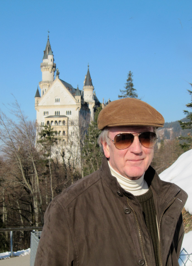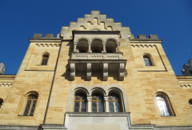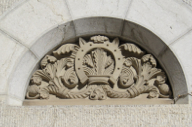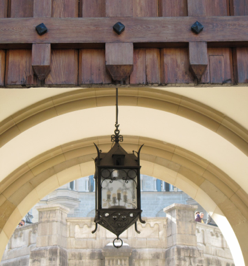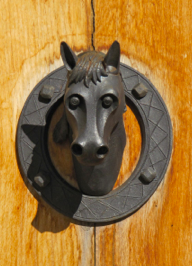neuschwanstein castle
Schwangau, on the Romantic road
Bavaria, GERMANY
europe
March 7, 2011


neuschwanstein castle
Schwangau, on the Romantic road
Bavaria, GERMANY
europe
March 7, 2011




After the death of his father, King Maximilian II of Bavaria in 1864, his son assumed the Bavarian throne as King Ludwig II. His childhood residence had been the Hohenschwangau Castle built between 1833 and 1867 by his father on the ruins of a Medieval castle known as Schwanstein. The family’s summer residence and hunting lodge had always been a favorite of the young king, who, after visiting Wartburg Castle in Eisenach in May, 1867, was inspired to build a romantic castle of his own. The site he chose for his project, Neuschwanstein Castle, was historical, as Hohenschwangau was a place of strategic importance with four castles during Medieval time. His concept for this building was to place it on a natural cliff, where the building would be harmonious to its natural setting of mountainous gorge and fir trees. The mountaintop was leveled, the construction crew blasting off the top eight meters/26 feet to prepare the platform on which the building would stand, the foundation stone laid on September 5, 1869. The gatehouse was completed and furnished in 1873, providing comfortable apartments for the building supervisors during the building project. By 1880, the exterior shell of the main part of the castle was completed in the Medieval style, under the directorship of Georg von Dollman, architect. Beginning in 1881, work began on the interior of the castle’s 5th floor Singer’s Hall, and 4th floor apartments for the king. The project consumed great sums of money, financed by King Ludwig II, the expenditures amounting to 3.7 million marks between 1883 and 1886. This sum far exceeding the estimated cost of 600,000 marks required for furnishing the rooms of the castle within the specified time frame. At the king’s unexpected death on June 13, 1886, the castle was still a construction site. The interior of the third floor, intended as guest rooms, was never completed, nor was the exterior with its decorative forms, a Gothic chapel on the first floor, nor a 90 meter/270 foot fortified tower constructed as originally intended by the king. When the king was taken away from his favorite castle, declared legally insane by a commission from Munich, he is said to have ordered his favorite servant with these words: “Sticherl, keep up the rooms for me! Don’t let them be profaned by curious spectators. I have spent he bitterest hours of my life here ... I shall never return again”. The next day, the king and his psychiatrist were found in a lake, having mysteriously met their deaths. King Ludwig II, at his death at the age of 41, had only spent less than a year in his e castle.
PHOTOS: Left Column: 1. View of Neuschwanstein Castle from Marienbrücke, a nearby bridge built of steel by King Ludwig II across a deep gorge. 2. View of the surrounding countryside in snow. 3. Detail: Stone carving above the gatehouse. 4. Royal heraldry of the kings of Bavaria. Center, Top: Castle tower. Center, Middle: View of the entrance courtyard from the gatehouse. Center, Bottom: View of Neuschwanstein from its plinth, the rocky mountain on which it stands. Right Column: 1. Jourdan at Neuschwanstein.2. Bronze detail on the gatehouse door at Neuschwanstein. 3. Henry at Neuschwanstein.


Fantasy Castle




